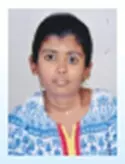Eureka! City researcher develops EQ model to predict earthquakes

Siva Sitaram (Inset Pic)
New model captures a particular location on where the earthquake is going to hit
Hyderabad: It is said that earthquakes are one of the most devastating natural disasters that have the potential to cause widespread destruction and bring immense suffering to communities, which cannot be predicted and prevented at the same time. But meet Hyderabad-based researcher Siva Sitaram 36-year-old who developed an EQ Prediction model that can predict earthquakes two weeks in advance.
Speaking to the Hans India, Siva Sitaram said, "I think that one's life should not be lost by earthquakes. For the past 17 years, I have been carrying out researches on earthquakes with meager resources and developed a model to predict earthquakes two weeks in advance. We basically see changes in the ionosphere before an EQ hits, and these micro-level physical changes are not recognised by the equipment on the ground and the present technology also does not facilitate observation of these micro-changes near the epicenter. However, these micro-changes influence the Ionosphere and alerts about the changes happening which has been accepted by the scientific community."
Stretching on how this prediction model is unique from other models, he said, in the EQ prediction model the most important is the magnitude, time and location. My EQ prediction model captures a particular location on where the earthquake is going to hit, but the other EQ models only predict that earthquake would occur in particular country, and these predictions are based on natural signs which are compared with actual occurrences based on USGS/NSC data for validation. Predictions in this model were made days in advance.
Around 2,000 EQ predictions have been captured but recorded prediction are about 25 to 30 among which few are Indonesia, Japan, Iran and few stated in India like Gujarat, Kerala and Sikkim.
Time estimation of an earthquake is the most challenging in every prediction model. Breaking point occurs deep below the ground and there is no technology available today to see that far below the ground. Physical data may not be available for basing the prediction of the time of earthquakes. In this model, time estimation has been done based on natural signs and with the further use of technology and resources, the time prediction will improve.
Siva has been receiving support from a voluntary organisation Pallesrujana for his project since four years. The major drawback for project is low quality of resources. To gather data for the model at present, he operates a single observatory equipped with low-quality equipment. And if data is collected data from multiple observatories, prediction accuracy can be improved.
Siva believes that the accuracy of his predictions could be greatly improved if he had the resources to maintain three observatories in different locations across India, with better equipment. He urged to receive support from any research organisation and the State and Central government for his project.















